A true spring beauty, flowering crabapple trees put on a massive show of pink blossoms, and updated varieties have ditched the terrible mini-apples in favor of mini-berries that are loved by squirrels, birds, and homeowners alike.
We had a flowering crabapple tree on our front lawn when I was growing up. I remember my mom having a love/hate relationship with that tree because it produced an amazing mass of gorgeous blooms in the spring, but it also dropped these terrible mini-apples onto the ground in the summer.
Those crabapples, or crappy apples as I would call them when I was a child, would rot on the lawn and create a God-awful stench that attracted every kind of insect imaginable, plus some other pests who shall remain nameless.
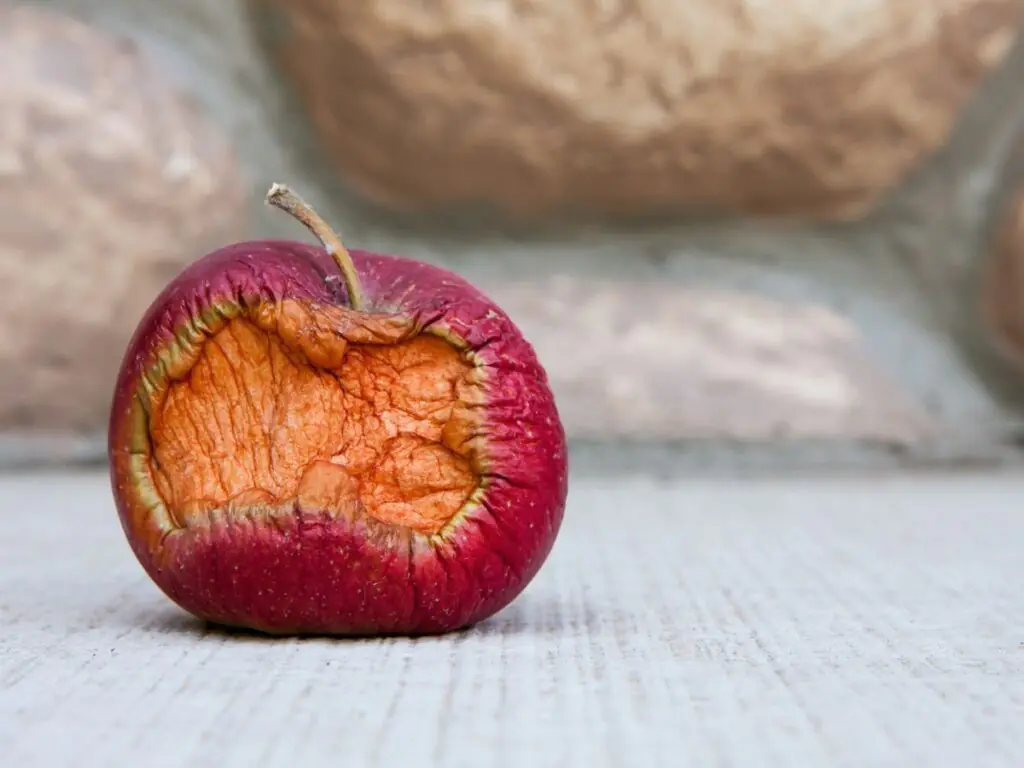
Every summer, she threatened to have that crabapple tree cut down and turned into firewood. But every spring, she would look in wonder at the gorgeous display of deep pink flowers that it provided.
I must admit that I never really thought that much about crabapple trees when I first started gardening. Perhaps it was the terrible memory of rotting fruit that made me shy away from them. That was, at least, until I moved into a house that had a flowering crabapple tree… except without the apples.
Instead, it had these tiny little red berry-sized fruits that the birds and the squirrels seemed to love. And even when some of them did drop to the ground, they were so small – about ¼ the size of a ripe cherry – that you hardly noticed them.
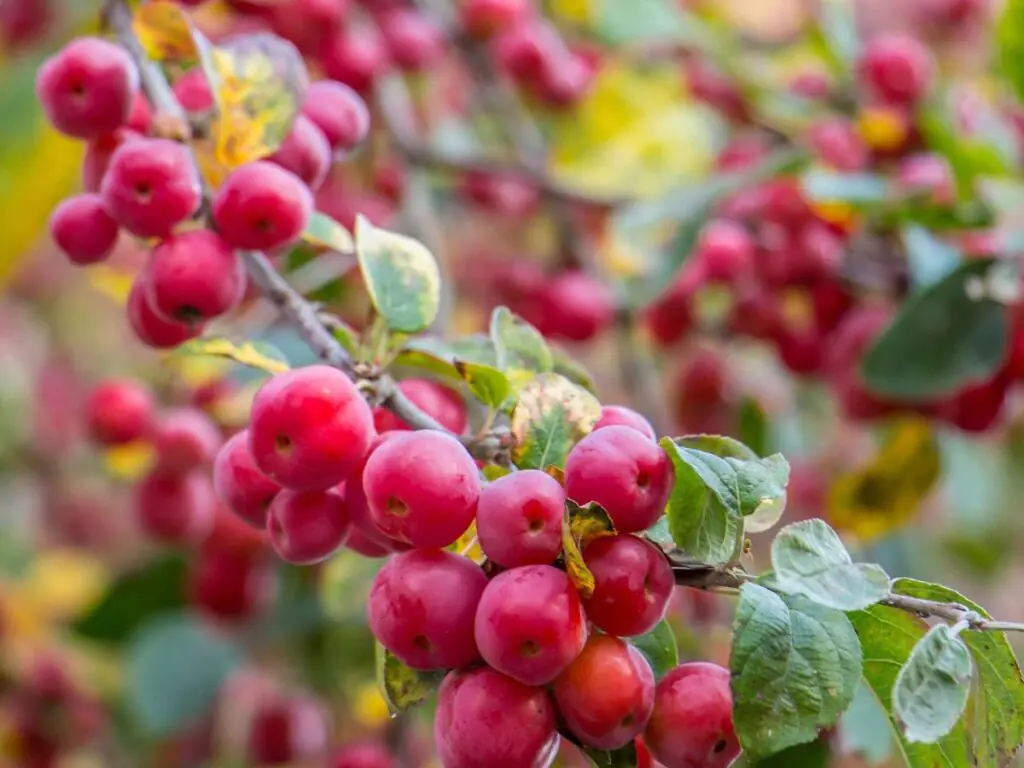
After I moved out of that house, I went searching for a replacement crabapple tree and discovered that the mini-berry versions were all that seemed to be available, which made me very happy.
With these new varieties, you get all of the goodness and beauty of a flowering crabapple tree without the actual crabapples.
The standard crabapple seems to have gone the way of the Dodo bird when it comes to residential landscaping – and good riddance to it.
I suppose it is possible to find the classic crabapple tree if you really want one. I’m not sure why you would, unless you’re a big fan of classic crabapple jelly.

CRABAPPLE JELLY:
Delicious?
Or The Devil’s Anus in a Jar?
I will admit that I am not – personally – a fan of crabapple jelly.
If someone want to prove me wrong by convincing me that their crabapple jelly is delicious… you’re welcome to try!
Although the smaller berry-sized apples from the varieties such as Prairie Fire are considered “edible”, that reflects more on the fact that they are non-toxic and far less on the taste.
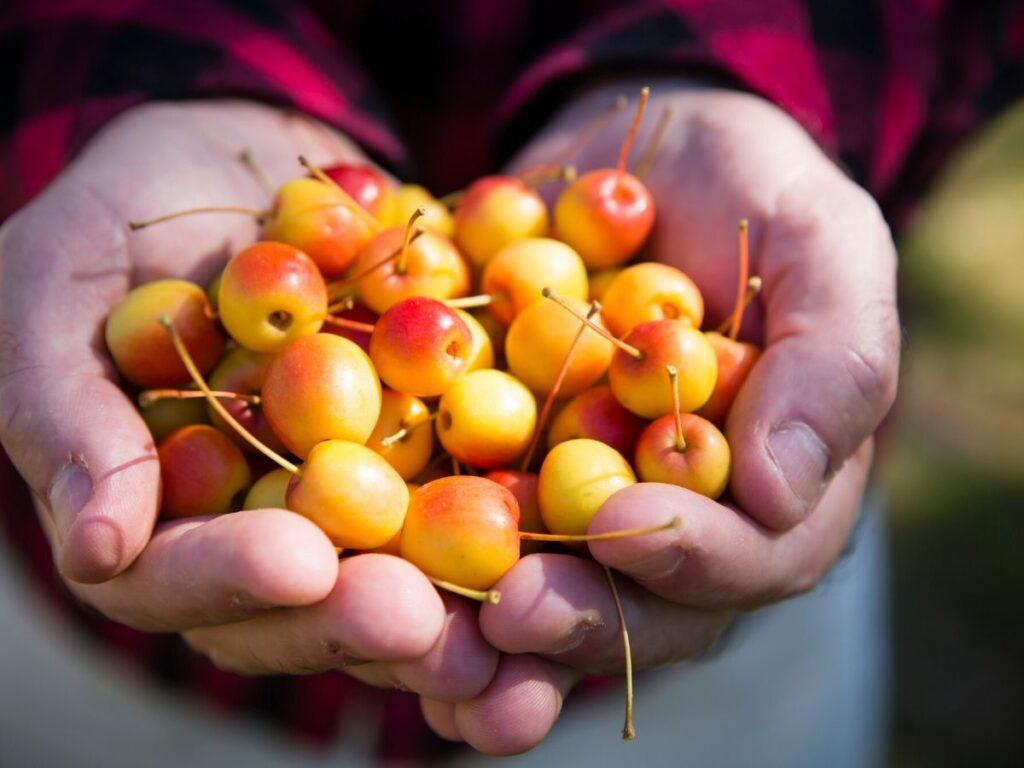
These are not the kind of crabapples you would ever want to use to make crabapple jelly, assuming you like crabapple jelly (have I mentioned that I do NOT??).
If you really insist that want a classic, large fruit crabapple tree, you can probably find them at specialized nurseries. But you are much more likely to find the ones that describe the fruit as “small berry-like fruits.” And those, in my opinion, are the best.
Spring is the Time of Flowering Crabapple Trees
The flowering crabapple tree bursts in to life shortly after the sunshine yellow forsythia has lost its last golden-yellow bud.
As with most spring-flowering trees, the blooms do not last long. But, man, they put on quite the show when they are here!
At one point, I had 5 different flowering crabapples on my property, in shades that range from the deepest of pinks to a practically-white double-bloom that is a real show stopper. Unfortunately, I lost one of the trees a few years ago, even though crabapple trees are relatively hardy and easy to grow.
But the ones that remain provide a showcase of beautiful light-to-dark pink blossoms every single year.
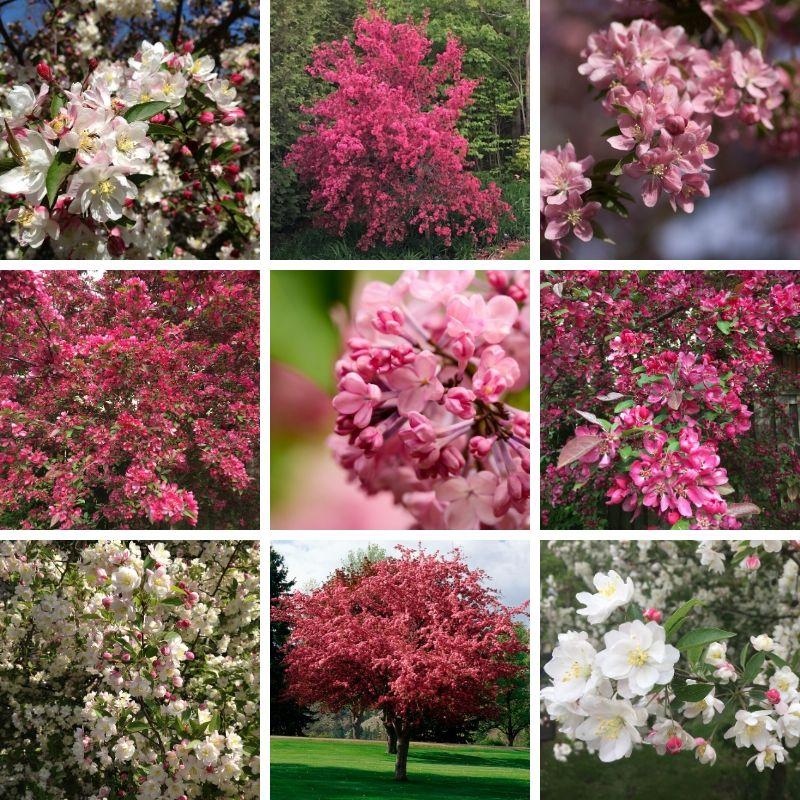
My Favorite Crabapple Varieties
From my own experience, my favorites varieties of crabapple trees have included the following species, chosen for their berry-sized crabapples (of course), the delightful color of their blooms, their ease of maintenance, and growth habits.
Malus Prairifire
Malus Prairifire features deep pink flowers plus red-tinged green foliage. This allows the tree to provide a colorful accent in the spring with it’s lovely flowers, as well as the additional colors of the red-tinged leaves in the spring and the dark red berries in the fall and winter.
Malus Brandywine
The lighter pink flowers of the Malus Brandywine cover the branches of this beauty quite profusely, creating a showy display that can be seen from a distance.
Younger foliage comes in a deep purple and then turns to green as it matures, which adds continued visual interest through the summer. The berries are a little less colorful than the Prairifire, so they don’t provide as much visual contrast in the early winter.
Malus Charlottae
One of my favorites because of it’s amazing show of very-pale pink (almost white) semi-double blossoms that create an absolute spectacle when they hit full bloom.
The only downside with this variety is that as the blooms start to wilt, they turn a relatively unattractive brown color for about a day before they finally fall off. However, the 10 days of brilliance is worth 1 day of minor yuck, in my opinion.
When the Crabapple Blooms, It’s Easy to Believe in Magic
Like the gold brilliance of the forsythia, the pink perfection of the crabapple tree creates a brilliant burst of spring color against a newly reborn landscape. Before other deciduous trees have fully realized their summer leaves, the crabapple provides its spray of color.
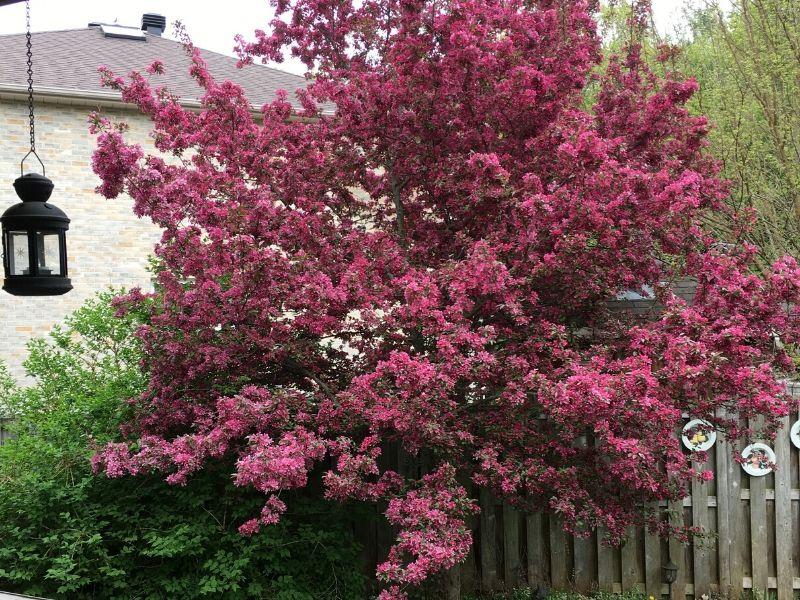
And there is something almost magical about how a warm spring wind will pick up these delicate petals and blow them across the yard, letting them dance in the air before gently depositing them on the lawn.
I have been known to sit on my back patio and stare – in complete and utter awe – at these magnificent trees when they are in full bloom. And it makes me just a little bit melancholy when the blossoms start to fade.
They are, without a doubt, my favorite spring-flowering tree and quite possibly my favorite part about spring in its entirety.
And even better when they come without even the remotest hint that somebody might consider making crabapple jelly with them!
Flowering Crabapple Tree FAQ
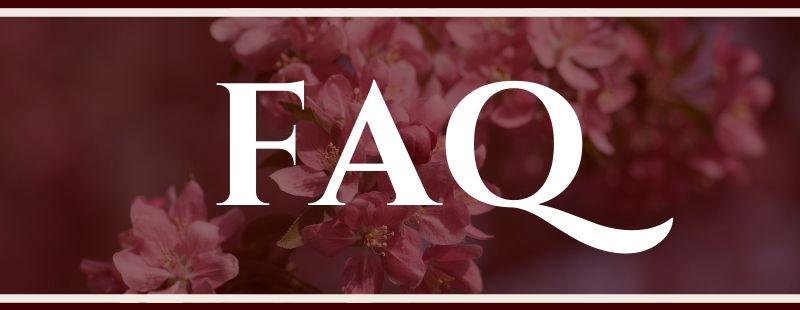
Your typical crabapple trees bloom during mid-to-late spring, depending on the region and climate variations. They bloom, on average, for 8 – 10 days, although this bloom time can be shorted by hot spells, heavy rains, or strong winds. Double-flowering crabapple varieties tend to have slightly longer bloom periods.
Yes, you can – if you so desire – eat all varieties of crabapples as they are considered non-toxic. However, most crabapples are too tart to eat raw and some of the smaller varieties – such as Prairifire – aren’t recommended for human consumption, even in jellies, because the taste is too unpleasant.
Yes, crabapple trees require full sun in order to produce flowers and fruit. Although a crabapple tree can survive in the shade, it may not get enough sun to generate the flowers.
Most crabapple trees are suitable for the U.S. Department of Agriculture plant hardiness zones of 4 through 8 & The Canadian Hardiness zones of 2a to 7a, which includes most of central and northern US as well as southern & central Canada.
The typical flowering crabapple tree has a lifespan of between 30 – 70 years. Sparse foliage is usually the first sign that a crabapple tree has passed its prime, but that can sometimes be addressed by aggressive pruning.
It depends on the variety of crabapple trees that you have planted, but the average crabapple tree grows to between 15 – 25 feet. Some dwarf varieties are much smaller (around 8 feet) and other larger varieties can reach 40 feet in height.
The three varieties that I most often recommend are Malus Prairifire because of its rich, deep pink flowers, Malus Brandywine for its bright pink flowers, and Malus Charlottae which has very-pale pink (almost white) semi-double blooms. If you have space, I often recommend adding several varieties to give you a spectrum of beautiful pink blooms.
Yes, as with all flowering trees and shrubs. That’s just sort of how these things work.
That is an excellent question. I am not a botanist, but I believe they are – technically – still apples, just very, very small ones. Plus, it is still within the same species of trees, and renaming it would be too complicated. Similar to how a Calla Lily is neither part of the calla nor the lily family, but the name had already stuck before someone figured that out.
Can you, yes. At least with most varieties that produce the regular-sized crabapples. Should you, no… because it’s terrible and nobody wants to eat that crap. Well, at least I don’t. But maybe that’s just me. I don’t think it is, but maybe.



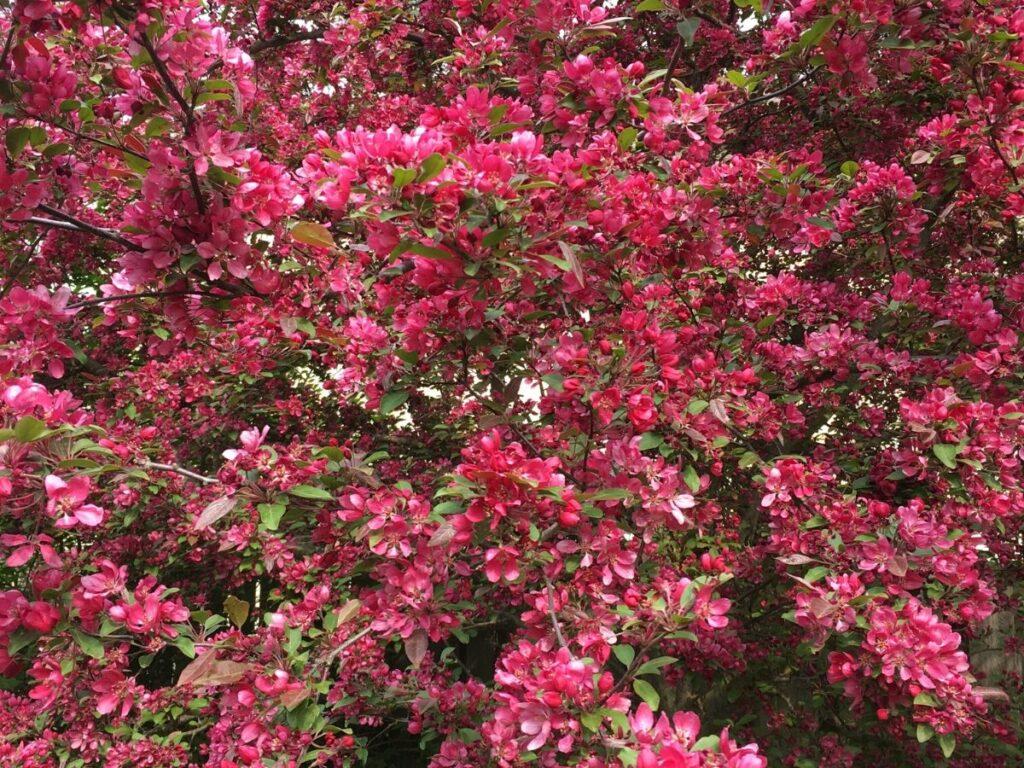


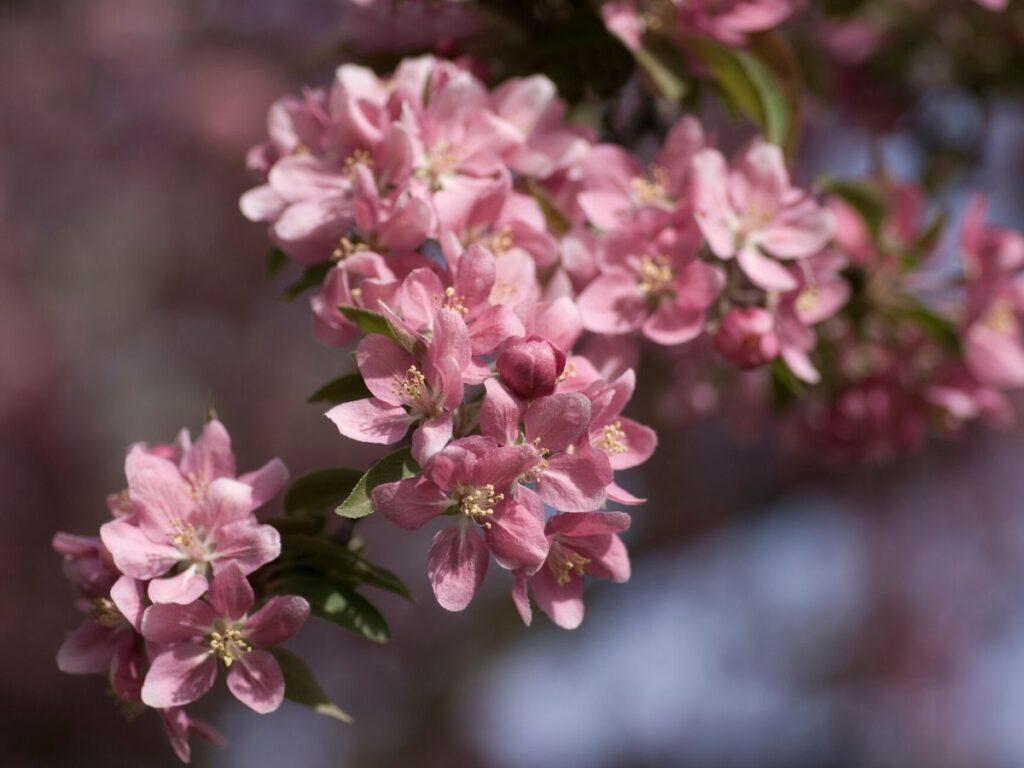



I always thought of the old crabapple trees with the big, ugly, horrible-tasting fruit. I didn’t know you could buy them now with small berries instead of applies. They are so pretty, and now that you don’t have to deal with rotten fruit every summer, I might plant one of these myself.
I amazed with the work you must have done to cultivate such beautiful crabapple trees! Absolutely STUNNING!!!! Fantastic job!
Beautiful! I just found you through the Pink Saturday party, and love this post! Thanks for all the great info – I’ll never look at crabapples the same way! Will check out your shop too! ?
Crab apple trees really do bloom with the most beautiful flowers! Our previous home was located in a cul-de-sac neighborhood that was lined with a variety of crab apple trees and I loved to look at them on neighborhood walks. Thanks for sharing these lovely photos and fun facts and linking up with me. – Shelbee
Beautiful trees but I can see why the original ones could have been a pain! Thanks for sharing with us at The Blogger’s Pit Stop!
My grandmother had actual crabappe trees in her yard and I can even remember trying one as a child. I loved the pretty pink blooms each spring.
What beautiful displays of beauty! I always enjoy seeing them in bloom every year.
Me too!!! I look forward to them every year!